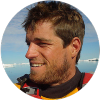Key Specs:
Length: 492cm (16’2”), Width 55cm (21.5”), Paddler ≈ 185cm (6’0”), 90kg (200lb)
For more specs see: First Look: SKUK Romany Surf

The first thing you notice when you sit in the cockpit of a Romany Surf is the width and length of the cockpit rim, giving you plenty of room to get your legs out of the boat while sitting in the seat. This is really useful for example when landing in rough conditions where you need to get out the boat quickly.
Strangely this is somewhat impeded by the seemingly redundant ‘wings’ on the cockpit rim that are presumably designed to improve your thigh grip but they aren’t quite in the right place to do that. Fortunately they don’t get in the way much but there is a strong temptation to cut them out.
The thigh grip is provided by the well placed knee bumps. These do a good job of fitting a wide range of leg lengths without getting in the way of the paddle stroke. These combined with the width of the cockpit give a wide legged position much like in a white water boat which is enormously helpful for handling rough water.
The hull design is also very much focused on rough water handling. It is wide with a shallow ‘V’ and soft edges. These three design elements, together with the shortish length and largish rocker of the boat, work very well together. They give a hull that is stable in rough water, confident to edge, turns well on the inside and outside edge but is forgiving when knocked sideways by waves.
However hull design is all about compromise and the price you pay for all the benefits is a slight reduction in hull speed. This makes for a hull that won’t win races, unless the races are in rough water, but it still gives a comfortable cruising speed for keeping up with groups.
As with all SKUK boats the outfitting is basic. The fitted ‘high performance glass seat’ is fibreglass, the hip pads are only there to cover the seat bolts, your lucky if you get a bit of self adhesive foam on the thigh braces and the backrest is minimalist. That’s not to say you won’t like it, some people do, most can put up with it but some do hate it. We found we liked the slightly tipped forward angle of the seat and the depth of the knee bumps gave a positive purchase.
On the outside the deck fittings are SKUK’s take on the VCP deck fitting, however they are a bit more prone to rotating if not kept tightened. The deck line and bungee are standard but the Romany Surf is missing a deck fitting in the centre of the front deck spare paddle location. This makes for less secure storage.
At the ends you get VCP toggles, these are basic but we found them to be the most comfortable in our Toggle Test. These are attached with SKUK’s standard single cord, designed to prevent trapped fingers but the asymmetry may upset your sense of order.
The skeg system is a hybrid between KariTek and VCP wire skeg. The front end slider being the former’s and the skeg blade being the latter. This fits into a built in fibreglass skeg box. The slider box does protrude into the cockpit close to where your knee sits. This didn’t cause us an issue it may do for you. While no skeg system is perfect we found this to be the best one in our Skeg Test.
That being said we found very little use for the skeg. The boat is very well balanced in the wind. It weather cocks slightly on the move but any less and it would be too difficult to turn into the wind when stationary. Also the seat has the option to be moved forward or backwards should you find your body type causes it to lee or weathercock excessively.
The three hatches are fairly large in volume due to the width of the boat and are easily capable of swallowing kit for a weekend camping trip, we have used them for up to a week with a more minimalist approach but a longer expedition boat would definitely be more suitable for this.
Overall we found this boat to be a great platform to work from as a guide or coach and a stable and manoeuvrable play boat for surf, tide races and rock hopping. While not fast it can hold its own and keep up on a group trip particularly in rough and windy conditions. That being said it won’t help you break any speed records and it wouldn’t be suitable for longer expeditions.
To see how this boat fits into the Sea Kayaking UK range see: Buyers Guide: SKUK Kayaks

By Philip Clegg
Approaching two decades of working in the sea kayaking industry, Phil can be found on a daily basis coaching and paddling on the coastline of Anglesey. That’s when he’s not travelling the world expeditioning, coaching and testing kit.


